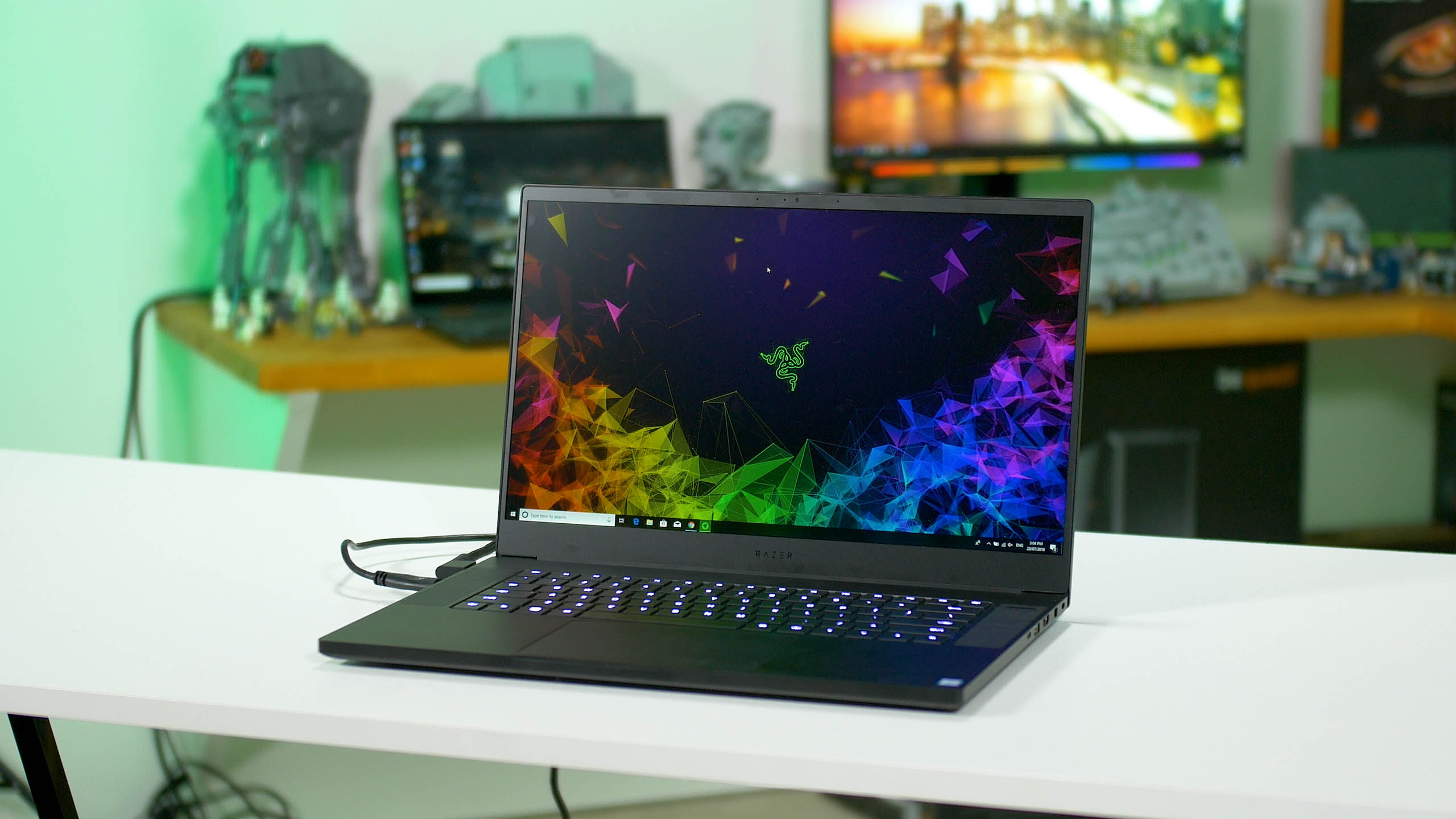Storage, Battery Life, Closing Remarks
Couple of other things to finish this one off. The Blade uses a Samsung PM981 SSD, in my case with 512GB of capacity, and as we've known from previous reviews, this drive is very fast and performs well in both sequential and random transfers.


As for battery life, we're looking at an 80 Wh integrated cell which delivers decent battery life. Not bad, not amazing, just okay for this sort of form factor. Luckily, the lack of G-Sync has allowed Razer to use Optimus technology, so it can switch off the discrete GPU when not in use, and that does help with battery life. But the Blade 2018 won't last as long as a high-end 13-inch ultraportable which is to be expected.

All up, the new Razer Blade is a bit of a mixed bag. There are plenty of things it does well, including its awesome metal unibody design, excellent updated high refresh gaming display that's factory calibrated, good keyboard and trackpad, plenty of ports and good internal hardware.
Its gaming performance is also very solid, matching our reference system with identical hardware across our test suite of games. Considering the Blade now comes with a six-core CPU and up to a GTX 1070 Max-Q, that means it's more than 25% faster in games compared to the old model, in what is essentially the same form factor. Hard to complain about that.
However the Blade still runs hot and loud while gaming, and that's meant Razer has needed to use the 35W configuration of the 8750H. While this doesn't have a significant impact in most games, it hurts productivity performance, so competing laptops like the MSI GS65 and Gigabyte Aero 15X are better choices for those that want to edit videos and game on the same system.
Then you have to factor in the pricing. The Blade with the GTX 1070 Max-Q inside starts at $2,400, which is a $200 premium over the GS65 with equivalent hardware. Lower tier models are also more expensive. The design of the Blade is far and away the best on the market with this hardware inside, and gaming performance is similar to the GS65, so it'll be up to you to decide if those factors justify the price difference. And then on top of that, the GS65's CPU is not limited in productivity workloads, so MSI's offering is at least on par with the Blade for gaming, and it's a tad faster for productivity.
I really want to like the Razer Blade, and it has the makings of a great system, and it is, but Razer is charging a premium over the competition making it difficult to recommend to everyone. If design is one of the most important factors for you, the Blade will do it, otherwise better value will be found with the revamped and aggressively priced MSI GS65.
I think the Razer Blade 2018 is only a few tweaks away from becoming the standout gaming laptop option on the market, so I have high hopes for the next generation. But right now it's so close, yet so far from being the best gaming laptop and its competitors are just too strong to ignore.
Shopping Shortcuts:
score
Pros: The best gaming laptop build on the market. Accurate high-refresh display is great for gamers and professionals. GTX 1070 Max-Q model is much faster than the old Blade.
Cons: Runs hot and loud while gaming. Razer has power limited the CPU, causing lower-than-expected productivity performance. Very expensive.


